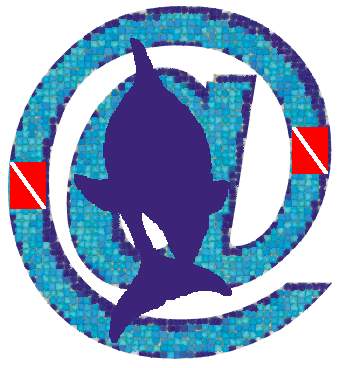 |
Intern@tion@l Dre@m.net |
 |
Intern@tion@l Dre@m.net |

Rip it out, take it along and dive in good health--our exclusive guide
to curing what ails the traveling diver.
By Samuel Shelanski, M.D.
Motion Sickness | Cuts, Bites & Stings | Dehydration | Headaches | Traveler's Diarrhea
Doctors
never really get away from their work because people are always asking for
medical advice. We're happy to help, but most of the ailments our fellow divers
ask us about can be self-treated. With that in mind, here's a travel-ready
guide to beating the most common ailments.
Traveling
divers spend a lot of time in planes and boats, environments that challenge our
sense of equilibrium. When the inner ears, eyes and various other sensors give
conflicting messages to the brain--if the ears say right while the eyes say
left--the brain revolts and the result is revolting. Other factors that can
contribute to that queasy feeling are anxiety, fatigue, being overheated or any
coexisting ailment.
If you've already
"screamed at the submarines," the good news is that you're probably
feeling better. For the rest of the ride:
So, your
encounter with the local marine life was a little too close for comfort, eh?
Here's basic first aid for the most common diving scrapes.
The key to
avoiding all these problems is a respect for the ocean environment. So:
Urchin
spines are like hypodermic needles that break off once deep inside you,
injecting their venom. The venom from stonefish spines is also delivered deep
into the wound. Both cause excruciating pain, redness, swelling and bleeding.
More severe complications can include infection, weakness, paralysis, breathing
difficulty--even death if the victim has an anaphylactic reaction.
Stinging
hydroids, fire coral (not a true coral) and jellyfish all have nematocysts,
barb-shaped stinging cells filled with venom. Hydroids such as fire coral
produce an immediate burning sensation followed within 30 minutes by an itchy
rash that takes several days to heal. Jellyfish stings cause burning and leave
a trail of bumps and welts. Serious jelly encounters can result in a severe
burning sensation, muscle spasms, vomiting, shock, even collapse.
Although
the nematocysts of the soft coral polyps can't do much damage to humans, cuts
and abrasions from the sharp points and razor edges of the stony skeleton can
create burning pain and itchy welts. This "reef rash" (a form of
coral poisoning) can take up to six weeks to heal completely.
Water is
the traveling diver's best friend. Without enough of it, you'll become
dehydrated, a condition that puts you at higher risk of DCS and causes fatigue.
Perspiration, breathing dry air (such as in airplanes, air-conditioned hotel
rooms and scuba tanks), urination, diuretic beverages (those that contain
caffeine or alcohol) and medications, menstruation and traveler's diarrhea all
cause fluid loss.
Your body will tell you if
you need more fluid. Common early-warning signs of dehydration include constant
thirst, headache, fatigue, nausea and dark urine. If you experience these
signs, get out of the sun and drink plenty of fluids. If they persist, leave
the diving for another day.
Diving can
trigger headaches in several different ways: neck and back strain from
improperly adjusted or too-heavy gear, dehydration, sun glare, masks that are
too tight, aspiration of salt water, and the mental strain of calculating
repetitive dive tables. However, the four most serious dive-related headaches
are:
Symptom: Dull, throbbing headache after
diving that does not respond to analgesics or migraine medications.
Cause: Carbon dioxide buildup in the body,
usually due to improper breathing, which triggers increased blood flow to the
brain.
Symptoms: Pain in the back of neck and head.
Cause: Muscular tension in the neck and
jaw caused by stress or anxiety over unfamiliar diving conditions.
Symptoms: Forehead or face pain on ascent or
descent.
Cause: Inability to equalize pressure in
the sinuses. Contributing factors include inflammation in the nose and sinuses,
often caused by allergies or a cold.
Symptom: Headache with neurological deficit.
Cause: Type II decompression sickness or
arterial gas embolism.
·
Hyperbaric oxygen therapy. If you have a headache and any symptom of
DCS--pain in a joint or limb, itching, skin rash, localized swelling, nausea or
vomiting, dizziness, ringing in the ears, extreme exhaustion--call the Divers
Alert Network and get to the nearest chamber. Headache, along with neurological
deficit, can be symptomatic of arterial gas embolism or Type II DCS.
Traveler's
diarrhea is the most common ailment afflicting divers, and it's caused by food
and water containing bacteria different from those your gut is accustomed to.
When you swallow these bacteria, they end up in hand-to-hand combat with your
native bacteria--and you wind up the loser.
·
Almost everyone will recover from simple traveler's diarrhea within
three to five days, even without treatment. I recommend divers use
Pepto-Bismol. It won't speed recovery, but it will lessen the severity of the symptoms.
Medications such as Imodium may delay recovery by trapping the offending
bacteria in the intestines. If symptoms last for more than a few days, seek
medical attention. If you experience any form of diarrhea, you're losing
enormous amounts of fluid, so stay well-hydrated.
